The Ultimate Guide To Creating A Bog Garden — How To Make Your Own Earthy Space!
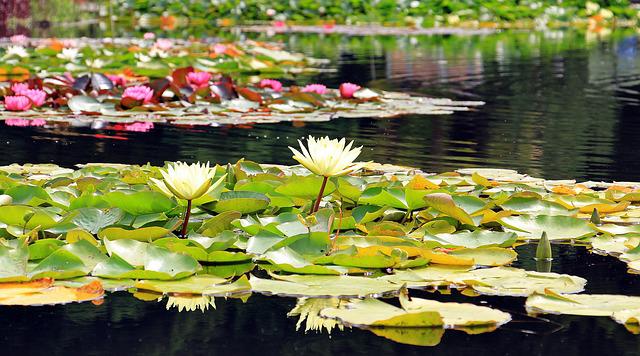
Have you always wanted to create a beautiful, natural space in your garden but didn’t know where to start? With this comprehensive guide, you’ll be able to create a bog garden that’s both unique and eye-catching! Bog gardens are perfect for those who love nature and want to get close to it, and they’re also a great way to attract wildlife. This guide will teach you everything you need to know about planting, watering, and caring for a bog garden. By the time you’re finished, you’ll be able to create your own earthy space that’s sure to please!
Table of Contents
What is a Bog Garden?
A bog garden is an excellent substitute for a pond. A pool of water and a patch of waterlogged soil mimic natural bog conditions are the only differences between the two.
The term “bog” refers to a type of freshwater wetland formed over a long time by the decomposition of plant matter. Many people, except scientists, believe that the thick layers of soft and spongy peat that accumulate in bogs make them look like muck or quagmires.
Toxic and acidic bogs result from their thick layers of waterlogged and decaying plants. Bogs receive no nutrients from runoff from neighboring land because they only receive water from rain. The result is a wide range of plant communities that thrive in these unique growing conditions. A wide variety of species live in these ecosystems, including sundews, pitcher plants, venus fly traps, and other carnivorous plants. Wetland plants are often unique in their appearance and how they have evolved over the eons to meet their evolving needs. With “wet feet,” these plants thrive in full sun without the need for typical soil nutrients or even very low nitrogen levels in some cases. Carnivorous plants use a variety of specialized botanical structures to catch their prey. Most orchids and some blueberries in the bog have specialized relationships with mycorrhizal fungi that colonize the roots and harvest nutrients from the soggy mass of the swamp.
How To Build a Ground Bog Garden
Planning Stage
- Decide on the appropriate scale. To determine the size of your bog garden, layout a rope or hose. However, be aware that it will be more difficult to maintain and may necessitate the use of stepping stones if it is too large.
- Make sure you do your homework on your plants. In contrast to pond plants, Bog plants prefer soils rich in nutrients and organic matter. The bog is full of fascinating flora, from creeping jenny to tiny water forget-me-nots. A little homework will reveal their preferences, such as whether they prefer sun or shade, the level of dampness and acidity, and the amount of space they need.
Setting Up
- Choose a place. In the same way, you make a lake. You can also make an artificial bog! You should choose a spot that is level and away from trees that are too close.
- A hole needs to be made. Make a hole about 12 inches deep.
- A butyl liner should be put in the hole to make it waterproof. Make a few drainage holes in the liner, then mix the excavated soil with some organic material and put it back into the hole you just dug in the earth.
- Wet the soil well. Make sure to use rainwater if the soil is acidic to help the plants grow. If tap water is the only way to get water, let it stand for a few days so that any additives can break down.
- Wait for about a week for the soil to settle before you start to plant.
Maintaining Stage
- Short and tall plants can be used to provide cover and perches.
- The pendulous sedge and gunnera are two species to avoid because they can be aggressive and grow to enormous proportions.
- A variety of blooms, such as marsh-marigolds in the spring and hemp-agrimony in the fall, can be planted to provide color.
- Even if it’s dry outside, it’s important to keep your bog moist. If you can, use rainwater whenever possible.
- If you have a large bog garden, consider putting in stepping stones. You won’t have to worry about compacting the soil as you tend to the plants.
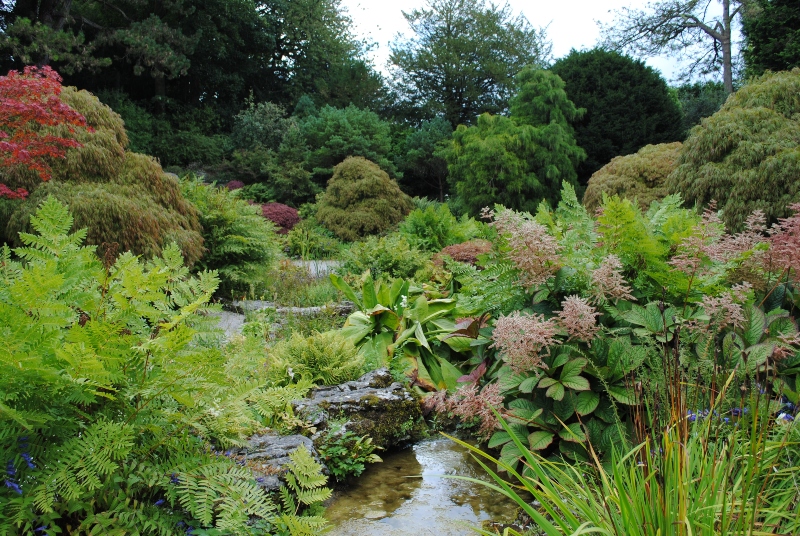
A Bog Garden in a Container
- Decide on at least 8 inches of depth for the container you choose. Most pots and other containers that can hold water will work for this job.
- Builder’s sand (found in box and hardware stores) and peat moss can be mixed to make soil for plants (available in garden centers).
- It’s best to put 2 to 3 inches of sand at the bottom of the container.
- The rest of the container should be filled with the planting medium. This is what you should do. It should be at least 6 to 8 inches deep for the planting media to work well.
- With clean water, hydrate well. Then, before planting, leave it alone for a few days to allow the peat to absorb the water thoroughly.
- Take care when you plant your plants, and then put live moss in between them. When you have moss in your garden, you can keep the water and the living things stable. It will also help to keep your skin from drying out. Commercially bought moss can also be found in wet forests. Ensure the woods aren’t on public land and ask for permission if they’re on private land.
- Place the pot in a place that is both sunny and open. Use only clean tap water and make sure that the media doesn’t dry out.
- To avoid all fertilizer, it is very important not to use any. Nitrogen and phosphorous are bad for pitcher plants because they make them grow too fast. It’s important to remember that they get their nutrients from the bugs they catch.
Recommended Bog Plants
Primulas
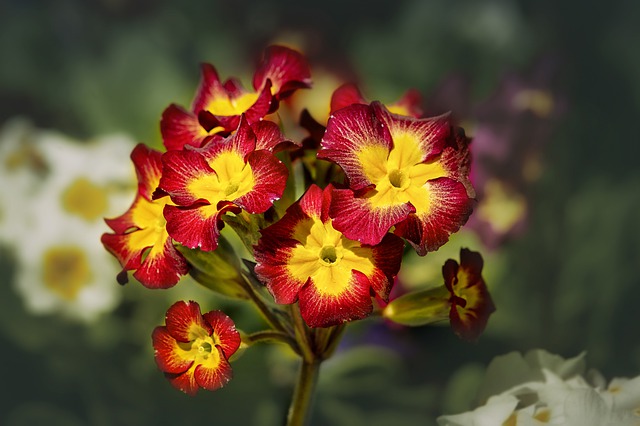
Primulas are called deadly nightshade, but they’re not poisonous. They have beautiful flowers and grow in bog gardens throughout the world! There are many species of primulas, but the most often used for bog plants is Primula farinosa. It grows up to 4 feet tall, or 6 inches in diameter. It has white petals and pink stamens with pale green veins and yellow sepals, making it look like a daffodil flower! The leaves can be red-purple (like maples) or reddish-brown (tree spruces). It usually grows in very moist habitat, but it’s possible to grow it outside as long as you keep the soil wet.
Pitcher Plant
If we use poison vine, the plant will try to get more nutrients from our pets already being poisoned. It’s a very competitive species in my bog!
When you visit your bog garden, there might be one hanging around. They’re especially handsome when they bloom with white nectar-producing flowers like other carnivorous plants do for snails and insects! Hanging out upside down on its leaf, this plant looks completely at home in a bog garden. You
Marsh Marigold
Caltha palustris
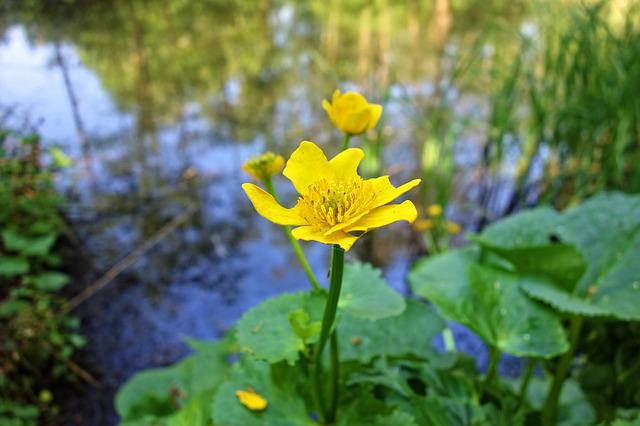
is an extremely beautiful wildflower native to marshes, meadows, and bogs! It’s a small fern-like plant with flowers like buttercups. The color of the leaves can vary from green to pinkish or purplish.
Ornamental Rhubarb
Rheum palmatum
Rheum is an ornamental plant native to North America, Europe, and Asia. It can be found in marshes, bogs, stream banks, moist meadows, and around trees on the edge of woods. The leaves are round to elliptical-shaped, with one large lobe at each end that points up like a small arrow!
Umbrella Plant
Darmera peltata
These plants are just like other carnivores because they only eat insects in one interesting way. These plants cover themselves entirely with leaves to scare away birds who might land on them and cause harm. The umbrella plant has a stalk that goes up 4-12 inches at the end of which are lots of lipped, pointed leaves (hence “umbrella”). If an animal steps upon these pillows, the insect is immediately swallowed rather than protecting the leaves. In addition, the stem is lined with sharp needle-like spikes that protect against herbivorous mammals like deer and rabbits who might eat them next.
Snake’s Head Fritillary
Fritillaria meleagris
This fritillary is bluish or yellow and has fluffy down-like hair on the underside of its leaves. The current size record for this plant, as determined by scientists, involved collecting it from someone’s garden which saw that a snake had made their way into his marsh when people thought he was dead and discarded it, only to have the foliage revive and bloom again after a few days.
Iris
Iris
Iris can be found in wetlands, open woods, and shady places like the shade of a bush. There are different varieties, but all have a beautiful iris flower that surrounds its opposite sides with five-petaled flowers, spikes, or spires coming off them like upside-down umbrellas (hence the name) whose top petals point up.
Astilbes
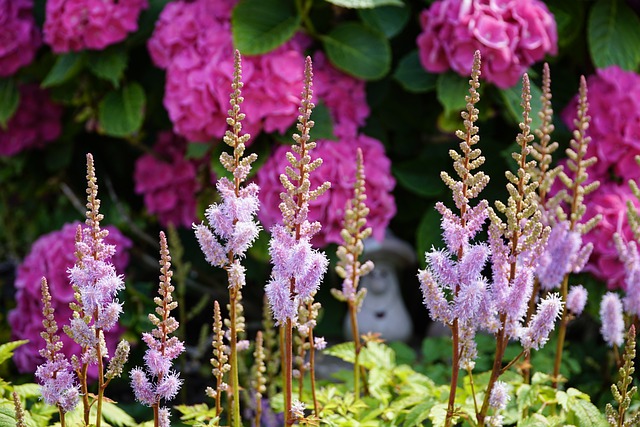
These plants have tall stems covered with small, flat leaves. The common astilbes bloom in late spring or early summer and turn bright red near the base of their stem. At the same time, they persist into the autumn together, forming a mass similar to pothos foliage, though because these are perennial plants can be easily raised as houseplants.
Plantain Lily
This plantain lily, or hosta, blooms with white flowers 5-6″ wide. The tubular-shaped flower is generally pink, though it can also be yellow or a combination of colors like the variegated types it comes in. Hostas can be cultivated in a bog garden if the growing conditions suit their needs. It often grows on paths and the edges of wooded bogs. Its bright green foliage acts as a highlight against any negative shade conditions this intricate weed may offer to nearby plants: competitors for water and nutrients, shade from nearby plants, or sun exposure.
Leopard Plant
Ligularia przewalskii
Leopard plants have prominent triangular leaves, spiky flowers, and resinous exudates that are light green. This plant grows in wet areas like bogs, puddles, and along the edges of ponds or creeks, where it is often seen with its darker peripheral growth contrasting against water: a noticeable contrast to any surrounding dark-colored woods or actual animal animals who would not want to dig into it for bait because the odor produced by these leaves would attract unwelcome predator animals.
Globeflower
Trollius sp.
These plants have bright yellow blooms that usually bloom for only a short period. They’re named as such because they grow in huge clusters resembling daisies rather than any flower-like every other leafy plant. Their color makes them stand out and distinguish themselves from anything else around it.
Corkwood shrub (solum blackberry) shrub or small tree with all the characteristics associated with Cork trees
Venus Fly Trap
Dionaea muscipula
These plants are carnivores, having adapted to a nearly pure diet of fly pupae and insects. These are the only type of Venus Flytrap in North America, and they grow both terrestrial (for example, on the edge of lakes or streams) and aquatic. This plant is famous for its bright red “eyes,” which flash when stimulated by prey items it has caught.
Royal Fern
Osmunda regalis
Spiny ferns differ from similar plants in that they usually have longer fronds and broad, brittle leaves. They are sometimes used as houseplants because of their loose nature when grown & bright green coloration makes them good ornaments applied to any part of the plant, such as flower spikes or spraying some along the railing to arch over planters base where it wants more stability. There is only one spiny fern in the southeastern United States (Eastern Coastal Plain), and it grows on rocky creeks with rich soil.
